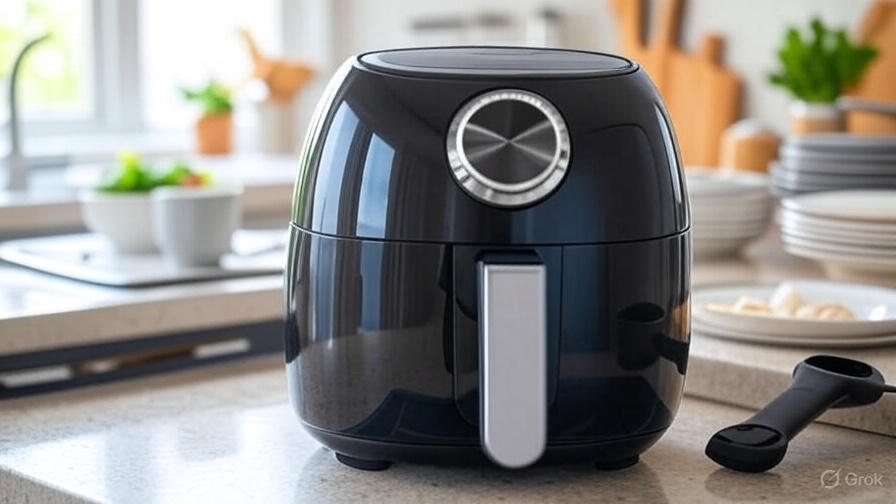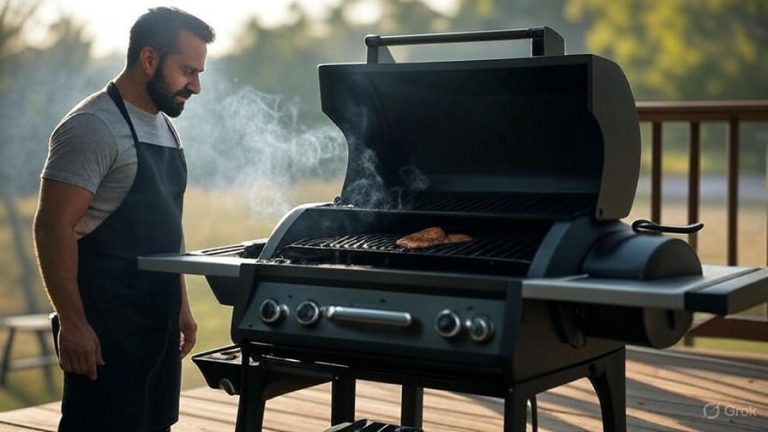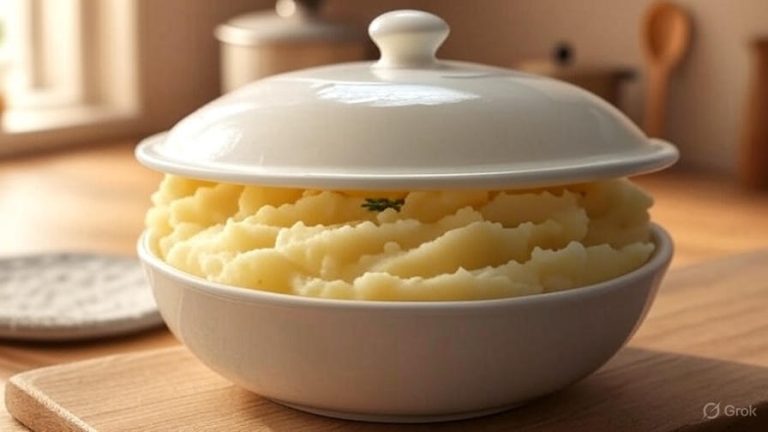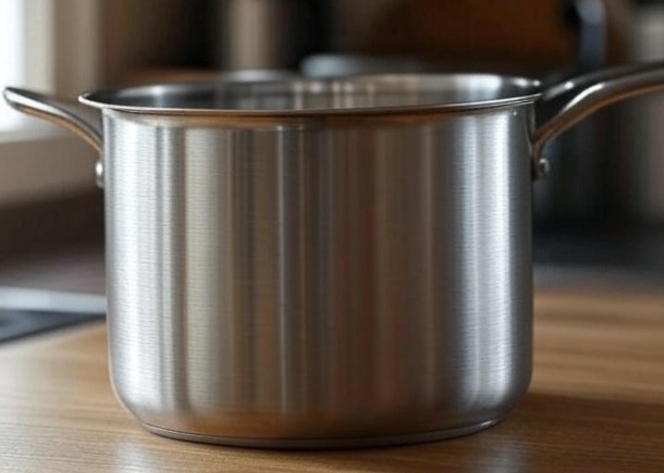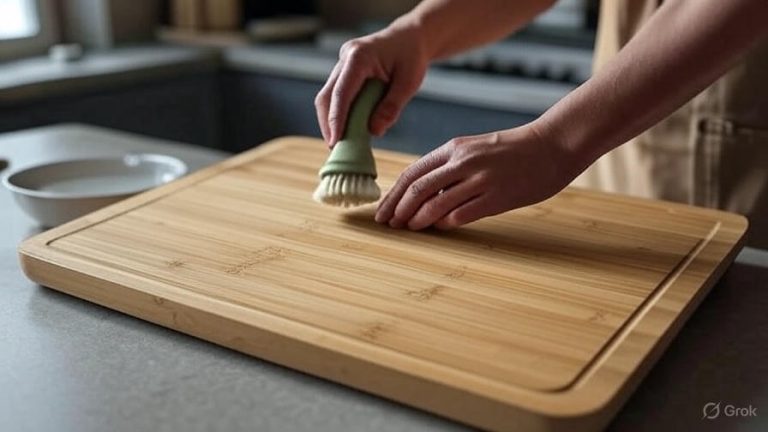How To Choose Air Fryer?
Air fryers have revolutionized home cooking, transforming the way we prepare crispy, delicious meals without excessive oil. These countertop appliances use rapid air circulation technology to create that coveted golden-brown texture we all love. However, with countless models flooding the market, finding the right air fryer can feel overwhelming.
This comprehensive guide walks you through every essential factor to consider when buying an air fryer. You’ll learn about different types, key features, capacity requirements, and budget considerations that will help you make an informed decision.
Types of Air Fryers Available
Basket-Style Air Fryers
Basket-style air fryers represent the most common and recognizable design. These units feature a removable basket that slides into the main chamber, similar to a traditional deep fryer setup. The heating element sits above the food, while a powerful fan circulates hot air around the basket.
These models excel at cooking smaller portions and work particularly well for foods that benefit from frequent shaking or tossing during the cooking process. French fries, chicken wings, and vegetables cook evenly in basket-style fryers. The compact design makes them ideal for small kitchens or single-person households.
Most basket-style air fryers offer capacities ranging from 1 to 8 quarts. The pull-out basket design allows easy access to food during cooking, making it simple to check progress or shake ingredients for even browning.
Oven-Style Air Fryers
Oven-style air fryers, also known as toaster oven air fryers, combine multiple cooking functions in one appliance. These units resemble miniature convection ovens and typically feature glass doors, multiple rack positions, and various cooking modes beyond air frying.
These versatile appliances can toast bread, bake cookies, roast vegetables, and even dehydrate fruits. The horizontal design accommodates larger items like whole chickens or pizza, making them suitable for families or those who frequently entertain guests.
Oven-style models usually offer more cooking space than basket-style units and often include accessories like baking pans, wire racks, and drip trays. However, they require more counter space and typically cost more than basic basket models.
Paddle-Style Air Fryers
Paddle-style air fryers feature a rotating paddle that continuously stirs food during cooking. This design ensures even cooking without manual intervention, making it perfect for busy cooks who want hands-off meal preparation.
These units work exceptionally well for foods that benefit from constant movement, such as stir-fries, roasted nuts, or mixed vegetables. The automatic stirring eliminates hot spots and prevents food from sticking together.
While less common than other types, paddle-style air fryers offer unique advantages for certain cooking tasks. They typically have larger capacities and work well for batch cooking or meal prep scenarios.
Capacity Considerations
Small Households (1-2 People)
For singles or couples, air fryers with 1 to 3-quart capacity provide adequate cooking space without wasting counter real estate. These compact units can prepare individual portions or small side dishes efficiently.
A 2-quart air fryer can cook two chicken breasts, a serving of fries for two people, or a small portion of vegetables. These smaller models heat up quickly, use less energy, and clean up easily after meals.
Consider your typical meal sizes when evaluating small-capacity models. If you occasionally cook for guests or prefer batch cooking for meal prep, you might want to consider a slightly larger option.
Medium Families (3-4 People)
Families of three to four people benefit from air fryers in the 4 to 6-quart range. These mid-size units provide enough space for family meals while maintaining reasonable counter footprints.
A 5-quart air fryer can accommodate a whole chicken, enough fries for the family, or multiple pieces of fish. This capacity strikes a good balance between cooking space and kitchen practicality.
These models often include accessories like divider trays or multiple cooking levels, allowing you to prepare different foods simultaneously. This feature proves especially valuable during busy weeknight dinners.
Large Families (5+ People)
Large families or frequent entertainers should consider air fryers with 6 to 10-quart capacities. These substantial units can handle bigger portions and multiple food items at once.
An 8-quart air fryer can cook an entire meal for six people or prepare large batches for meal prep. Some models feature dual cooking zones, allowing you to cook different foods at different temperatures simultaneously.
Large-capacity air fryers require significant counter space and storage considerations. However, they eliminate the need for multiple cooking batches and can replace several other appliances in your kitchen.
Essential Features to Evaluate
Temperature Control Range
Look for air fryers that offer precise temperature control across a wide range. Most quality units provide settings from 170°F to 400°F, giving you flexibility for various cooking methods.
Lower temperatures work well for dehydrating fruits, warming leftovers, or slow-cooking delicate items. Higher temperatures create crispy exteriors on proteins and vegetables while maintaining moisture inside.
Digital controls typically offer more precise temperature settings than dial controls. Some advanced models include preset temperature options for common foods, making operation even simpler.
Timer Functions
Reliable timer functions prevent overcooking and allow you to multitask while your air fryer works. Look for units with timers that extend up to 60 minutes for longer cooking processes.
Some air fryers include multiple timer settings or cooking programs that automatically adjust time and temperature for specific foods. These features prove particularly helpful for new air fryer users who are still learning optimal cooking times.
Advanced models may include delay start functions, allowing you to prep food in advance and have it ready at a specific time. This feature works well for meal planning and busy schedules.
Preset Cooking Programs
Preset programs take the guesswork out of air frying by automatically setting optimal time and temperature combinations for popular foods. Common presets include chicken, fish, vegetables, fries, and baked goods.
These programs work especially well for beginners who haven’t yet developed intuition for air fryer cooking. They also ensure consistent results when preparing frequently made dishes.
Some high-end models offer customizable presets, allowing you to save your preferred settings for specific recipes. This feature proves valuable for households with particular preferences or dietary restrictions.
Safety Features
Safety features protect both you and your kitchen from accidents. Look for air fryers with automatic shut-off functions that activate when the basket is removed or when cooking time expires.
Cool-touch handles and non-slip feet prevent burns and movement during operation. Some models include overheat protection that shuts down the unit if internal temperatures become dangerous.
Child safety locks prevent accidental operation, making these appliances safer in households with young children. These locks typically require a specific button combination to activate the unit.
Build Quality and Materials
Cooking Chamber Materials
The cooking chamber material affects both durability and food safety. Stainless steel chambers resist corrosion, clean easily, and maintain their appearance over time. They also distribute heat more evenly than plastic alternatives.
Some air fryers feature ceramic-coated chambers that provide non-stick properties without chemical coatings. These surfaces clean easily and don’t retain odors or flavors from previous cooking sessions.
Avoid air fryers with plastic cooking chambers, as these can warp under high heat and may release harmful chemicals into your food. Quality materials justify higher initial costs through improved longevity and performance.
Basket and Tray Construction
Non-stick baskets and trays make cleaning effortless and prevent food from sticking during cooking. Look for PFOA-free non-stick coatings that won’t release harmful chemicals when heated.
Dishwasher-safe baskets and accessories save time and effort during cleanup. Removable components should fit easily in standard dishwashers without requiring special positioning.
Some premium models feature stainless steel baskets with perforated designs that promote optimal air circulation. While these may require more careful cleaning, they offer superior durability and performance.
External Build Quality
Sturdy construction prevents wobbling during operation and ensures long-term reliability. Units with solid bases and reinforced handles withstand daily use better than flimsy alternatives.
Digital displays should be clear and responsive, with buttons that provide tactile feedback when pressed. Poorly constructed control panels may fail prematurely or become difficult to read over time.
Heat-resistant exteriors prevent damage to surrounding countertops and reduce the risk of accidental burns. Quality air fryers maintain safe external temperatures even during extended cooking sessions.
Budget Considerations
Entry-Level Options ($30-$80)
Budget air fryers provide basic functionality at affordable prices, making them ideal for first-time buyers or occasional users. These units typically offer manual controls, basic timer functions, and smaller capacities.
While entry-level models may lack advanced features, many provide perfectly adequate performance for simple air frying tasks. They work well for singles, students, or anyone wanting to try air frying without significant investment.
Consider the trade-offs when evaluating budget options. Lower-priced units may have shorter warranties, fewer accessories, or less durable construction compared to premium alternatives.
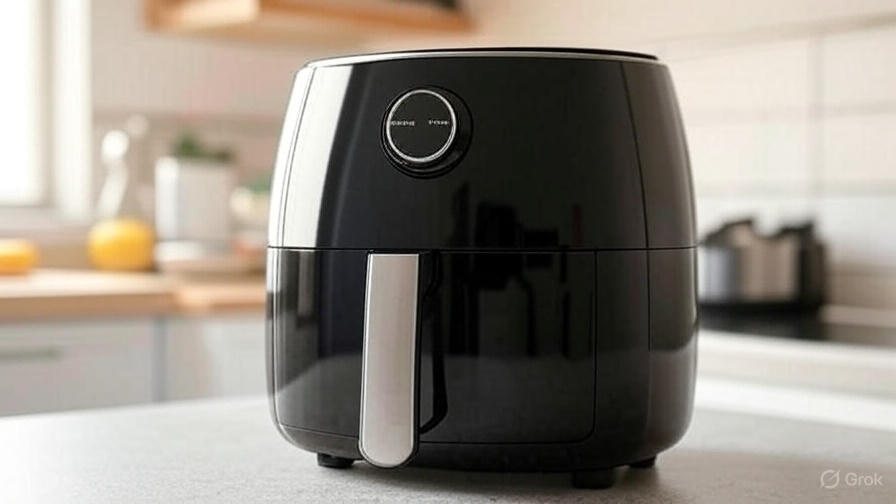
Mid-Range Models ($80-$200)
Mid-range air fryers strike a balance between features and affordability. These units often include digital controls, preset programs, and better build quality than budget alternatives.
Many mid-range models offer 4 to 6-quart capacities, making them suitable for small families. They typically include basic accessories and provide more precise temperature control than entry-level options.
This price range offers the best value for most households, providing reliable performance and useful features without premium pricing. Most reputable brands offer solid warranty coverage in this category.
Premium Units ($200+)
Premium air fryers justify their higher costs through superior build quality, advanced features, and larger capacities. These units often include multiple cooking functions, smart connectivity, and extensive accessory packages.
High-end models may feature dual cooking zones, rotisserie functions, or smartphone app integration. Professional-grade construction ensures years of reliable operation under heavy use.
Consider premium options if you cook frequently, have specific performance requirements, or want an appliance that can replace multiple kitchen tools. The initial investment often pays off through improved efficiency and durability.
Power and Energy Efficiency
Wattage Requirements
Air fryer wattage typically ranges from 800 to 1800 watts, with higher wattage units heating faster and maintaining temperatures more consistently. Larger capacity models generally require more power to heat effectively.
Higher wattage doesn’t always mean better performance, but it often correlates with faster preheating times and more stable cooking temperatures. Consider your typical cooking patterns when evaluating power requirements.
Check your kitchen’s electrical capacity before purchasing high-wattage units. Some older homes may have circuit limitations that affect appliance performance or require electrical upgrades.
Energy Consumption
Air fryers generally use less energy than conventional ovens for similar cooking tasks. Their smaller cooking chambers heat up quickly and maintain temperatures efficiently, reducing overall energy consumption.
Most air fryers consume between 0.8 and 1.5 kilowatt-hours per hour of operation. This efficient energy use makes them economical choices for daily cooking, especially compared to heating large ovens for small meals.
Energy-efficient models include features like rapid preheating, precise temperature control, and automatic shut-off functions that minimize unnecessary power consumption.
Ease of Use and Cleaning
User Interface Design
Intuitive controls make air fryers more enjoyable to use and reduce the learning curve for new users. Clear labeling, logical button placement, and responsive feedback improve the overall user experience.
Digital displays should be large enough to read easily and bright enough to see in various lighting conditions. Some models include LED indicators that show cooking progress or alert you when food is ready.
Consider your comfort level with technology when evaluating control systems. Simple dial controls may suit users who prefer straightforward operation, while tech-savvy cooks might appreciate app connectivity and advanced programming options.
Maintenance Requirements
Regular maintenance keeps air fryers performing optimally and extends their lifespan. Look for models with easily removable parts that clean thoroughly without special tools or procedures.
Dishwasher-safe components simplify routine cleaning, while hand-wash-only parts require more time and effort. Consider your cleaning preferences and available time when evaluating maintenance requirements.
Some air fryers include self-cleaning cycles or easy-clean coatings that reduce maintenance effort. These features prove particularly valuable for busy households or frequent users.
Accessory Availability
Available accessories expand your air fryer’s versatility and cooking options. Common accessories include baking pans, grill racks, rotisserie attachments, and silicone molds for various cooking methods.
Third-party accessories often provide more options and better value than manufacturer-specific items. Check accessory compatibility before purchasing additional items to ensure proper fit and function.
Some air fryers include starter accessory packages that provide immediate cooking versatility. These bundled options often offer better value than purchasing accessories separately.
Brand Reputation and Warranty
Established Manufacturers
Reputable brands typically offer better customer support, reliable warranty service, and consistent product quality. Research manufacturer histories and customer satisfaction ratings before making purchase decisions.
Established companies often provide better parts availability and service support over the product’s lifespan. This support proves valuable if repairs become necessary or if you need replacement accessories.
Consider brands with strong presences in your region to ensure accessible customer service and warranty support. Local availability of parts and service can significantly impact long-term ownership experience.
Warranty Coverage
Comprehensive warranty coverage protects your investment and provides peace of mind during ownership. Look for warranties that cover both parts and labor for at least one year.
Extended warranty options may provide additional protection for higher-priced units. Evaluate warranty terms carefully, including what’s covered, service procedures, and any limitations or exclusions.
Some manufacturers offer satisfaction guarantees or return policies that allow you to evaluate the product risk-free. These policies demonstrate manufacturer confidence in their products and reduce purchase risk.
Making Your Final Decision
Prioritizing Your Needs
Create a list of must-have features versus nice-to-have options to guide your decision-making process. Focus on features that align with your cooking habits and kitchen requirements rather than impressive-sounding options you may never use.
Consider how the air fryer will integrate with your existing kitchen appliances and cooking routines. An air fryer that complements your current setup will see more use than one that creates workflow complications.
Think about your long-term cooking goals and how an air fryer might support healthier eating habits or more efficient meal preparation. The right unit should enhance your cooking experience rather than complicate it.
Testing and Research
Read reviews from verified purchasers to understand real-world performance and reliability. Pay particular attention to comments about durability, ease of cleaning, and customer service experiences.
If possible, see units in person at retail stores to evaluate build quality, control responsiveness, and overall design. Hands-on experience often reveals details that specifications and photos cannot convey.
Compare similar models from different manufacturers to identify the best value for your specific requirements. Price alone shouldn’t determine your choice, but it should align with the features and quality you receive.
Installation and Setup
Plan your air fryer placement before purchase to ensure adequate space and ventilation. Most units require several inches of clearance on all sides for proper air circulation and safe operation.
Consider counter space, storage requirements, and electrical outlet placement when planning installation. The ideal location provides easy access while maintaining safe operation distances from other appliances and surfaces.
Some air fryers produce cooking odors or steam during operation. Ensure your planned location has adequate ventilation to prevent moisture buildup or lingering food smells in your kitchen.
Conclusion
The perfect air fryer balances capacity, features, build quality, and budget considerations specific to your household needs. By evaluating each factor systematically, you can identify the model that will serve you best for years to come.
Remember that the best air fryer is the one you’ll actually use regularly. Focus on practical features that support your cooking style rather than impressive specifications that may go unused.
Take time to research thoroughly, read reviews, and consider how different models align with your cooking goals. A well-chosen air fryer will transform your meal preparation routine and help you create delicious, healthier meals with minimal effort.
Your investment in the right air fryer will pay dividends through improved cooking efficiency, healthier meal options, and enhanced kitchen convenience. Make your decision confidently, knowing you’ve considered all the important factors that contribute to air fryer satisfaction and performance.

